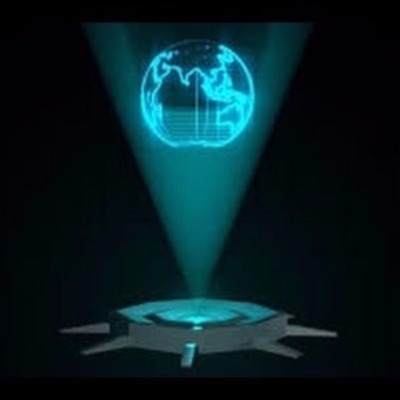Hologram is a three-dimensional image obtained from the projection of light onto two-dimensional figures. These "three-dimensional photographs" are formed through the process of holography, which works because of the wave property of light.

Holograms are similar to very realistic "mirages" or "illusions", reproducing in 3D images originally in two-dimensional or even three-dimensional. However, for the hologram to work it is necessary to propagate a light source in only one direction, such as a laser ray, for example, and a hypersensitive movie.
The light from the laser beam must split into two beams, one of which illuminates the object (reflecting on the film) and the other directly illuminating the film or location where the hologram will be recorded.
Traditional photographs record only the intensity of light waves, holograms are created because not only the intensity, but also all the waves' bumps and valleys are recorded. of light.
Holography technology was created by the Hungarian physicist
Dennis Gabor, in 1948, a feat that won him the Nobel Prize in Physics in 1971. However, holography only began to be explored in the 60s, with the improvement of the laser.Holograms are divided into two main categories: broadcast holograms (requiring laser light); it's the reflection hologram (used in the common holographic seals on credit cards and diplomas, for example. They are made based on light reflection).
The application of holograms is common in several areas, mainly in the artistic one, in research science, marketing and advertising, and security and anti-counterfeiting (holographic seals, by example).
As technology advances, holograms can now be played on some smartphones and other devices.

